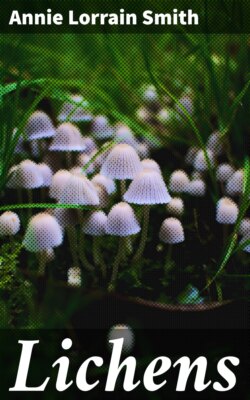Читать книгу Lichens - Annie Lorrain Smith - Страница 13
На сайте Литреса книга снята с продажи.
E. Period IV. 1780-1803
ОглавлениеTable of Contents
The inevitable next advance was made by Weber[72] who at the time was a Professor at Kiel. In a first work dealing with lichens he had followed Linnaeus; then he published a new method of classification in which the lichens are considered as an independent Order of Cryptogamia, and that Order, called “Aspidoferae,” he subdivided into genera. His ideas had been partly anticipated by Hill and by Adanson, but the work of Weber indicates a more correct view of the nature of lichens. He established eight fairly well-marked genera, viz. Verrucaria, Tubercularia, Sphaerocephalum and Placodium, which were based on fruit-characters, the thallus being crustaceous and rather insignificant, and a second group Lichen, Collema, Cladonia and Usnea, in which the thallus ranked first in importance. Though Weber’s scheme was published in 1780, it did not at first secure much attention. The great authority of Linnaeus dominated so strongly the botany of the period that for a long time no change was welcomed or even tolerated.
In our own country Relhan at Cambridge and Sibthorp[73] at Oxford were making extensive studies of plants. The latter was content to follow Linnaeus in his treatment of lichens. Relhan[74] also grouped his lichens under one genus though, in a second edition of his Flora, he broke away from the Linnaean tradition and adopted the classification of Acharius.
Extensive contributions to the knowledge of English plants generally were made by Sir James Edward Smith[75] who, in 1788, founded the Linnean Society of London of which he was President until his death in 1828. He began his great work, English Botany, in 1790 with James Sowerby as artist. Smith’s and Sowerby’s part of the work came to an end in 1814; but a supplement was begun in 1831 by Hooker who had the assistance of Sowerby’s sons in preparing the drawings. Nearly all the lichens recorded by Smith are published simply as Lichen, and his Botany thus belongs to the period under discussion, though in time it stretches far beyond.
Continental lichenologists had been more receptive to new ideas, and other genera were gradually added to Weber’s list, notably by Hoffmann[76] and Persoon[77].
For a long time little was known of the lichens of other than European countries. Buxbaum[78] in the East, Petiver[79] and Hans Sloane[80] in the West made the first exotic records. The latter notes how frequently lichens grew on the imported Jesuit’s bark, and he quaintly suggests in regard to some of these species that they may be identical with the “hyssop that springeth out of the wall.” It was not however till towards the end of the eighteenth century that much attention was given to foreign lichens, when Swartz[81] in the West Indies and Desfontaines[82] in N. Africa collected and recorded a fair number. Swartz describes about twenty species collected on his journey through the West Indian Islands (1783-87).
Interest was also growing in other aspects of lichenology. Georgi[83], a Russian Professor, was the first to make a chemical analysis of lichens. He experimented on some of the larger forms and extracted and examined the mucilaginous contents of Ramalina farinacea, Platysma glaucum, Lobaria pulmonaria, etc., which he collected from birch and pine trees. About this time also the French scientists Willomet[84], Amoreux and Hoffmann jointly published theses setting forth the economic value of such lichens as were used in the arts, as food, or as medicine.
